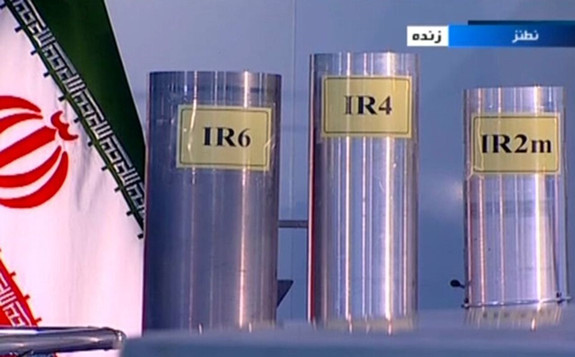Iran fed 20-percent uranium into an advanced centrifuge other than those already enriching to up to 60 percent at its Natanz site, the IAEA said on Monday.

Iran informed the International Atomic Energy Agency last week it had temporarily fed uranium enriched to up to 20% into extra “single machine and intermediate cascades...without any collection of products”, the IAEA said in a statement, adding it later verified Iran had begun feeding just one IR-6 centrifuge but the product was not being collected.
The move is likely to help Iran refine its knowledge of the enrichment process - something Western powers generally condemn because it is irreversible - but since this time the product is not being collected it will not immediately accelerate Iran's production of uranium enriched to close to weapons-grade.
Iran suspended multilateral talks in Vienna in June aimed at restoring the 2015 Joint Comprehensive Plan of Action (JCPOA), the 2015 nuclear agreement that curbed its nuclear activities. In the meantime, it continues its uranium enrichment, stockpiling 20-percent and 60-percent enriched fissile material.
The JCPOA put a 3.65-percent enrichment cap on Iran. The 20-percent enrichment level is already high and the 60-percent degree of purity has no civilian use.
The latest move has, however, prompted the International Atomic Energy Agency to "increase the frequency and intensity of its safeguards activities" at the above-ground Pilot Fuel Enrichment Plant (PFEP) at Natanz, the IAEA said in a report seen by Reuters. As of around 90% uranium is considered weapons-grade.
The IAEA said in a statement outlining the report that Iran informed it last week of changes to the setup of centrifuges, machines that enrich uranium, at the plant - Iran would feed uranium enriched to up to 20% into limited numbers of extra centrifuges without collecting the product.
"On 25 October 2021, the Agency verified that Iran began feeding (uranium hexafluoride gas) enriched up to 20% U-235 into a single IR-6 centrifuge in R&D line 2 at PFEP and that the resulting product and tails streams were being re-combined," the IAEA report said, meaning that after separating the enriched product it was mixed with the centrifuge's waste and not kept.
Iran had said it planned to also feed uranium enriched to up to 20% into other single centrifuges or small- to medium-sized cascades, or clusters, of machines on the same line, but those were not being fed at the time, the IAEA said.
Then-U.S. President Donald Trump abandoned the pact in 2018 and reimposed harsh U.S. sanctions. About a year later, Iran started violating some of the deal's limits on uranium enrichment.
President Joe Biden announced before his election that he intended to restore the JCPOA and in April the US, the United Kingdom, France, Germany, Russia and China began talks in Vienna.
Iran has also curtailed IAEA’s monitoring activities since February, demanding that US lift sanctions that have crippled the Iranian economy.